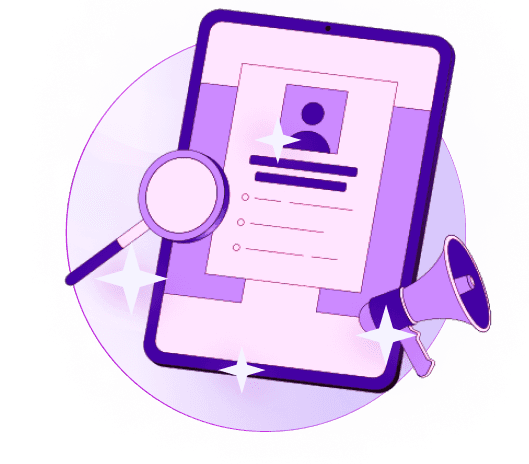Blogs
Articles

Maximizing Sales with Salesforce Integration In 2025
In a digital era driven by innovation and customer-centricity, businesses are constantly seeking ways to enhance sales performance and drive revenue growth. Leveraging the power of seamless CRM integration, organizations can streamline sales processes, centralize customer data, and automate tasks to gain valuable insights for informed decision-making. By aligning various sales tools and platforms, companies can work more efficiently, target leads effectively, and elevate overall sales effectiveness.
This strategic approach empowers sales teams to deliver personalized customer experiences, nurture long-term relationships, and ultimately foster loyalty. With a focus on optimizing sales strategies and boosting productivity, businesses can harness the full potential of integration solutions to stay ahead in the competitive market landscape.
Best Practices for Salesforce Integration
Key Steps to Seamlessly Integrate Salesforce with Existing Sales Systems
Integrating Salesforce with existing sales systems has become crucial for businesses looking to streamline their operations and maximize their sales potential. Here are some key steps to ensure a smooth integration process:.
Assess Your Current Systems : Before diving into the integration process, it is essential to have a clear understanding of your current sales systems and processes. Identify areas that need improvement and how Salesforce can address those needs.
Define Integration Objectives : Clearly define your integration objectives and what you aim to achieve by integrating Salesforce. Whether it is improving data visibility, automating processes, or enhancing customer relationships, having clear objectives will guide your integration strategy.
Choose the Right Integration Tools : Selecting the right integration tools and platforms is crucial for a successful integration. Salesforce offers a range of integration options, such as Salesforce Connect, APIs, and third-party integration tools. Evaluate your requirements and choose the tools that best fit your needs.
Ensure Data Quality : Data is at the core of any integration process. Ensure that your data is clean, accurate, and up-to-date before initiating the integration. Establish data governance policies to maintain data quality post-integration.
Plan for Scalability : Consider future scalability needs when designing your integration architecture. Anticipate future growth and ensure that your integration solution can scale with your business.
Tips for Maximizing the Benefits of Salesforce Integration
Integrating Salesforce with your existing sales systems is just the first step. To maximize the benefits of Salesforce integration, consider the following tips:.
Provide Adequate Training : Ensure that your sales team is adequately trained on how to use Salesforce post-integration. Training sessions and workshops can help maximize adoption and utilization of the platform.
Monitor Performance Metrics : Track key performance metrics post-integration to measure the impact of Salesforce on your sales processes. Monitor metrics such as lead conversion rates, sales cycle length, and customer retention to assess the effectiveness of the integration.
Iterate and Improve : Integration is an ongoing process. Continuously gather feedback from users and stakeholders to identify areas for improvement. Regularly iterate on your integration strategy to optimize performance and drive better results.
Stay Updated with Salesforce Updates : Salesforce regularly releases updates and new features. Stay informed about these updates and leverage new functionalities to enhance your sales processes and stay ahead of the competition.
By following these best practices and tips, businesses can ensure a seamless Salesforce integration that drives efficiency, improves sales outcomes, and enhances overall business performance.
Future Trends in Salesforce Integration
As technology continues to advance at a rapid pace, the world of Salesforce integration in sales is also undergoing significant transformations. In this blog section, we will explore the emerging technologies that are shaping the future of Salesforce integration, as well as delve into predictions for the evolution of Salesforce integration strategies.
AI and Machine Learning in Salesforce Integration
Artificial Intelligence (AI) and Machine Learning (ML) are becoming increasingly prevalent in Salesforce integration. These technologies are revolutionizing how businesses analyze data, automate processes, and gain valuable insights. AI-powered chatbots, predictive lead scoring, and dynamic pricing optimization are just a few examples of how AI and ML are enhancing Salesforce integration to drive sales effectiveness and efficiency.
IoT Integration with Salesforce for Enhanced Customer Insights
The Internet of Things (IoT) is another game-changer in Salesforce integration. By connecting IoT devices to Salesforce, businesses can collect real-time customer data, track product usage, and deliver personalized experiences. From smart devices to wearables, integrating IoT with Salesforce provides a holistic view of customer interactions, enabling tailored marketing campaigns and proactive customer service.
Blockchain Technology Revolutionizing Data Security in Salesforce Integration
Blockchain technology is transforming data security in Salesforce integration. Its decentralized and immutable nature ensures secure data sharing and transparent transactions. By leveraging blockchain, businesses can enhance trust among customers, protect sensitive information, and streamline data exchanges within the Salesforce ecosystem.
The Rise of Low-Code/No-Code Platforms in Salesforce Integration
Low-code and no-code platforms are simplifying Salesforce integration for businesses of all sizes. These platforms empower users with limited coding skills to build custom apps, automate workflows, and integrate third-party systems with Salesforce. The democratization of integration through low-code/no-code tools is accelerating digital transformation and enabling rapid innovation in sales processes.
Predictive Analytics Driving Personalized Customer Experiences
Predictive analytics is reshaping how businesses engage with customers through Salesforce integration. By analyzing historical data, identifying patterns, and forecasting trends, predictive analytics enables personalized recommendations, targeted marketing campaigns, and proactive customer support. Leveraging predictive analytics in Salesforce integration transforms customer interactions into tailored experiences that drive loyalty and satisfaction.
The landscape of Salesforce integration is constantly evolving, driven by these emerging technologies and innovative strategies. Businesses that embrace these future trends will gain a competitive edge in the sales industry. By harnessing the power of AI, IoT, blockchain, low-code/no-code platforms, and predictive analytics, organizations can unlock new opportunities, optimize processes, and deliver exceptional customer experiences. Stay ahead of the curve and explore the exciting possibilities that future trends in Salesforce integration offer for transforming your sales operations.
Conclusion
Integrating Salesforce into your sales process can significantly boost your sales performance and streamline your operations. By leveraging the powerful tools and features offered by Salesforce, businesses can effectively track leads, manage customer relationships, and ultimately increase their revenue.
It is evident that Salesforce integration is a valuable investment for any organization looking to maximize their sales potential and stay ahead in today's competitive market.

Create Your Free Persana Account Today
Join 5000+ GTM leaders who are using Persana for their outbound needs.
How Persana increases your sales results
One of the most effective ways to ensure sales cycle consistency is by using AI-driven automation. A solution like Persana, and its AI SDR - Nia, helps you streamline significant parts of your sales process, including prospecting, outreach personalization, and follow-up.



